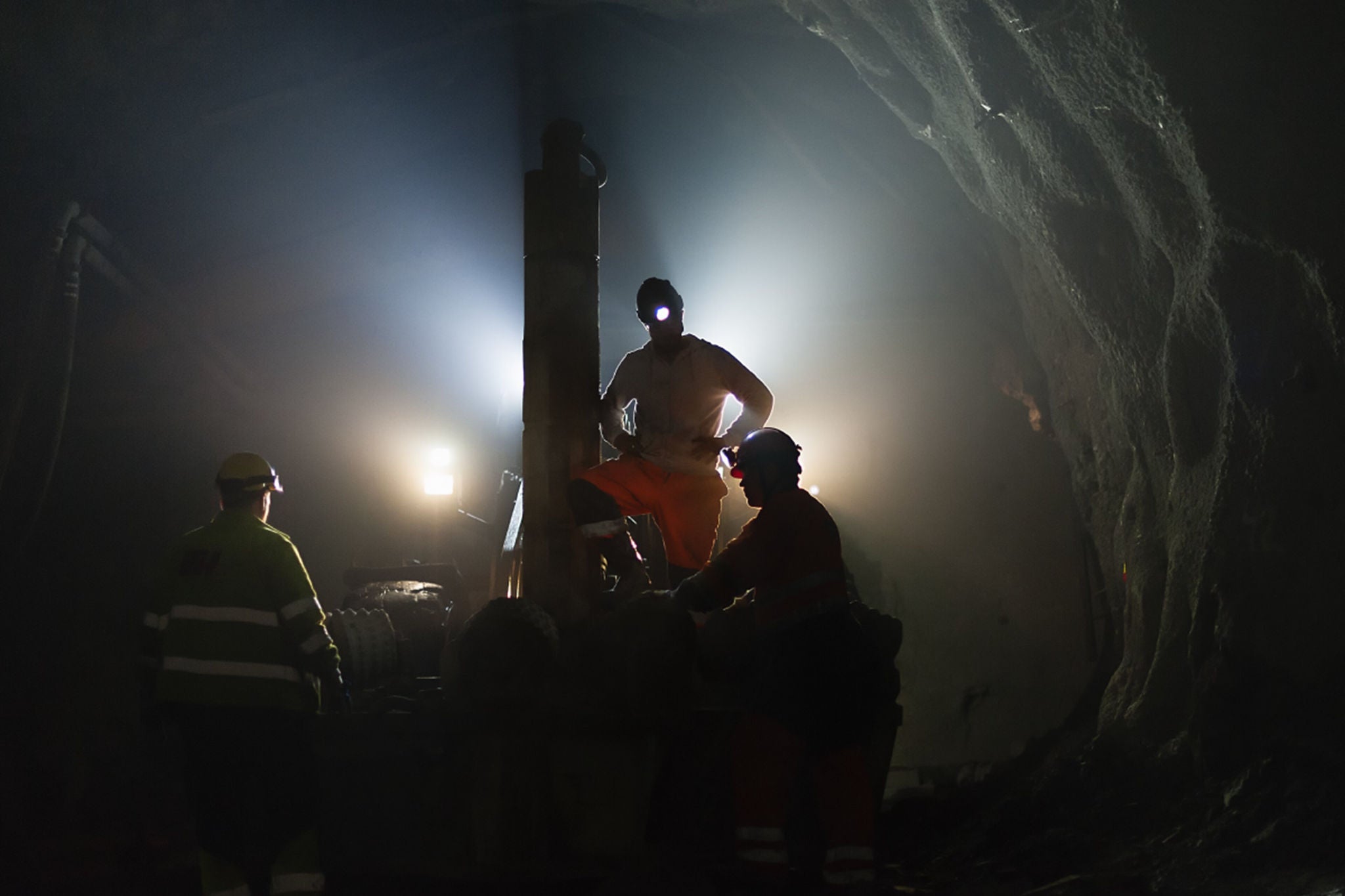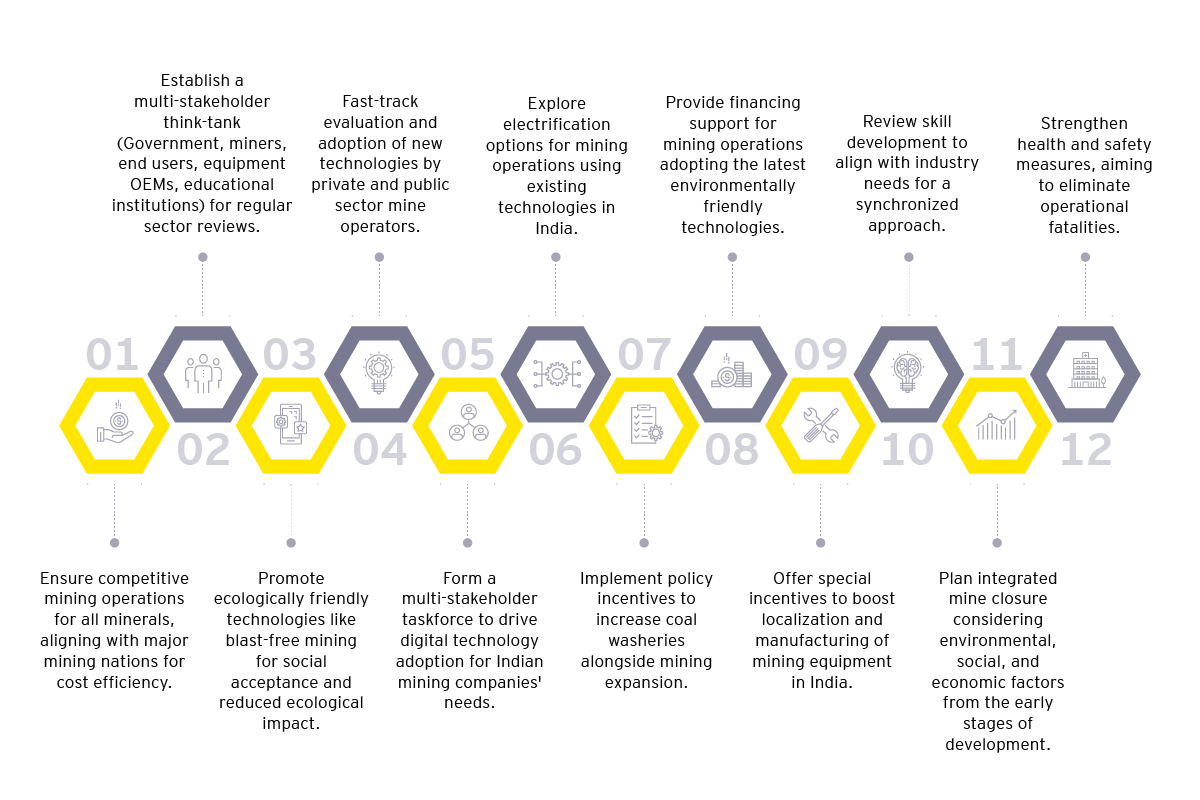EY refers to the global organization, and may refer to one or more, of the member firms of Ernst & Young Global Limited, each of which is a separate legal entity. Ernst & Young Global Limited, a UK company limited by guarantee, does not provide services to clients.

The future of mining in India lies in tech innovations, propelling the nation towards self-reliance and sustainable growth.
In brief
- Automation and digitalization enhance mining efficiency, minimizing environmental impact.
- Collaboration among the mining industry, policymakers, and researchers is crucial in this tech shift.
India's mining and coal sectors serve as the foundation for a thriving industrial base in the country. With abundant mineral resources, India is a global leader in the production of iron ore and coal. Despite its significant reserves, India continues to import a substantial portion of its mining needs with several challenges hindering the realization of a self-reliant mining sector. Seasonal fluctuations, stringent environmental regulations, and the labor-intensive nature of mining operations further complicate the industry landscape.
EY and Confederation of Indian Industry’s (CII) recent report titled ‘Utkrisht Bharat in Mining’ highlights the technological interventions needed to transform the growth of the Indian mining sector. It further sheds light on the urgent need to adopt advanced methods, such as in-pit crushing, conveyorization, automation, and digitalization. These technologies not only promise immediate benefits but also pave the way for a greener, more efficient future for the mining industry in India.
Technological innovations: A glimpse into the future
The mining sector can achieve a significant boost by implementation of key technologies. In-pit crushing, facilitated by semi or fully mobile crushing plants, and conveyorization of mines promise enhanced operational efficiency. Automation and digitalization play pivotal roles, offering seamless integration and real-time data analysis.
Electrification and sustainability: Redefining mining operations
One of the major benefits of embracing advanced technologies is the increased electrification of mining operations. By reducing diesel consumption and incorporating electricity sourced from renewable sources, the sector can significantly reduce its environmental footprint. Moreover, these technologies enhance operational reliability, ensuring continuous mining even in adverse weather conditions. Automation and digitalization further bolster system reliability, ensuring high throughput throughout the year.
Financial impact: Driving efficiency and reducing expenses
Beyond environmental benefits, adopting these technologies directly impacts the financial landscape of mining operations. Efficient resource utilization and streamlined processes, there is a potential for a substantial reduction in operational expenses. The report suggests that successfully applying these technologies can result in a remarkable 20-30% decrease in operational costs. This reduction not only enhances profitability, but also improves the overall financial attractiveness of mining operations in India.
Collaboration for a prosperous future
Considering these technological advancements, it is imperative for all stakeholders to collaborate effectively. The growth of the mining sector is intertwined with the nation's progress, and a collective effort is essential to fully leverage the benefits of these innovations.
The report presents a twelve-point action agenda for mining in India, serving as a roadmap for stakeholders to navigate the challenges and opportunities ahead.

Download the full pdf
Summary
India's mining sector stands at a pivotal juncture, with the potential to drive economic growth and contribute significantly to the vision of an 'Atmanirbhar Bharat' (self-reliant India). By addressing challenges through technological innovation, sustainable practices, and community engagement, the sector can unlock its true potential. As the industry evolves, strategic reforms and a collective effort from all stakeholders will be instrumental in shaping a competitive, eco-friendly, and socially responsible mining sector for India's future.
How EY can help
-
Through enhanced corporate reporting, EY can support finance teams to meet demands for high-quality enhanced financial and nonfinancial information.
Read more


